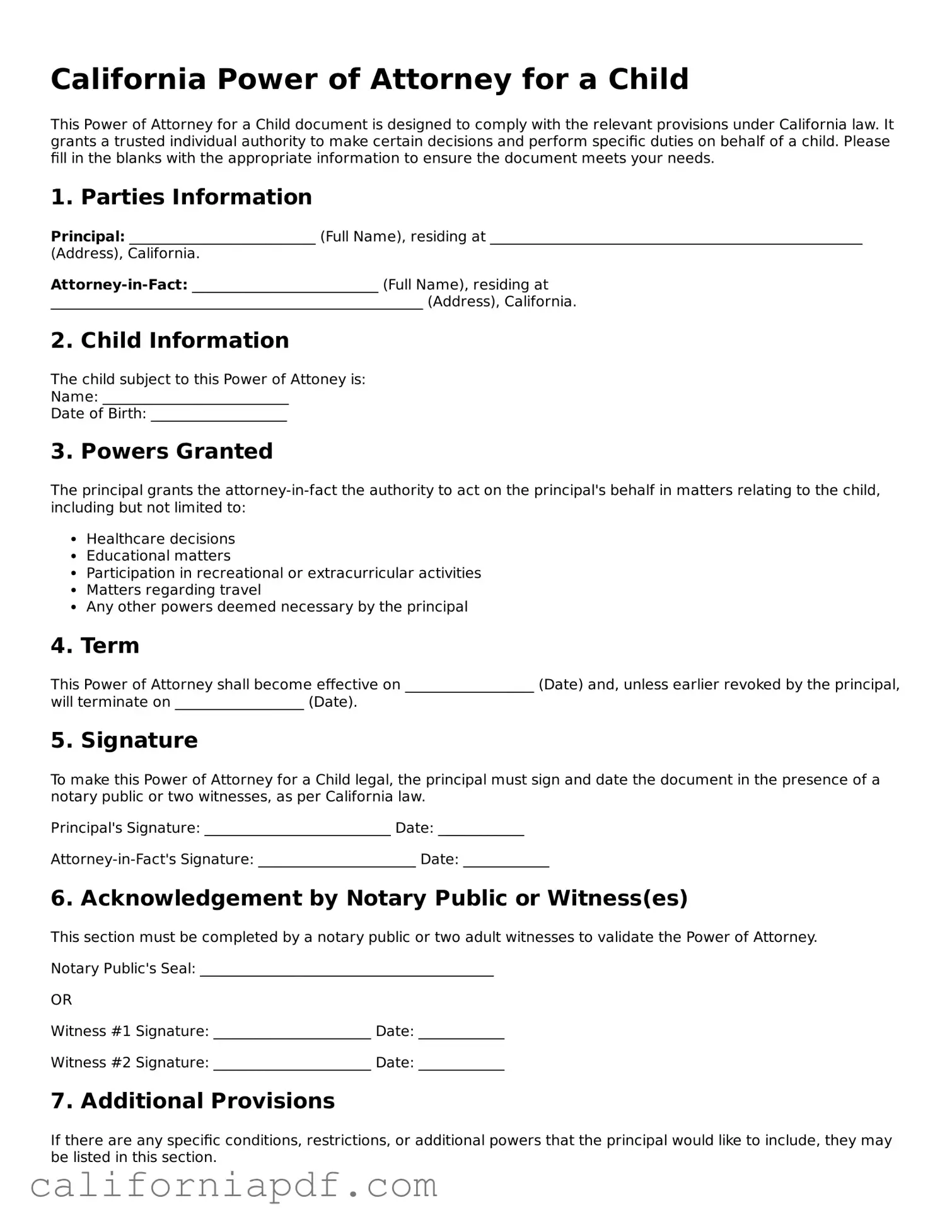California Power of Attorney for a Child
This Power of Attorney for a Child document is designed to comply with the relevant provisions under California law. It grants a trusted individual authority to make certain decisions and perform specific duties on behalf of a child. Please fill in the blanks with the appropriate information to ensure the document meets your needs.
1. Parties Information
Principal: __________________________ (Full Name), residing at ____________________________________________________ (Address), California.
Attorney-in-Fact: __________________________ (Full Name), residing at ____________________________________________________ (Address), California.
2. Child Information
The child subject to this Power of Attoney is:
Name: __________________________
Date of Birth: ___________________
3. Powers Granted
The principal grants the attorney-in-fact the authority to act on the principal's behalf in matters relating to the child, including but not limited to:
- Healthcare decisions
- Educational matters
- Participation in recreational or extracurricular activities
- Matters regarding travel
- Any other powers deemed necessary by the principal
4. Term
This Power of Attorney shall become effective on __________________ (Date) and, unless earlier revoked by the principal, will terminate on __________________ (Date).
5. Signature
To make this Power of Attorney for a Child legal, the principal must sign and date the document in the presence of a notary public or two witnesses, as per California law.
Principal's Signature: __________________________ Date: ____________
Attorney-in-Fact's Signature: ______________________ Date: ____________
6. Acknowledgement by Notary Public or Witness(es)
This section must be completed by a notary public or two adult witnesses to validate the Power of Attorney.
Notary Public's Seal: _________________________________________
OR
Witness #1 Signature: ______________________ Date: ____________
Witness #2 Signature: ______________________ Date: ____________
7. Additional Provisions
If there are any specific conditions, restrictions, or additional powers that the principal would like to include, they may be listed in this section.
________________________________________________________________________________________________________________________
________________________________________________________________________________________________________________________
By completing this document, you confirm that you understand your rights and obligations under the relevant sections of California law pertaining to the Power of Attorney for a Child. This document does not provide legal advice. For legal advice, please consult a licensed attorney.
